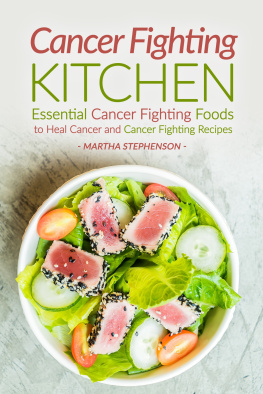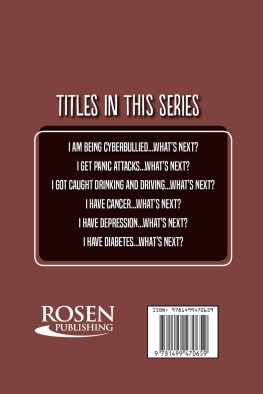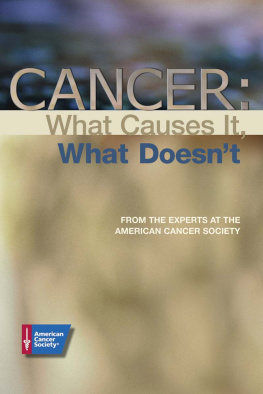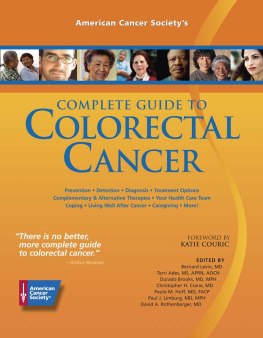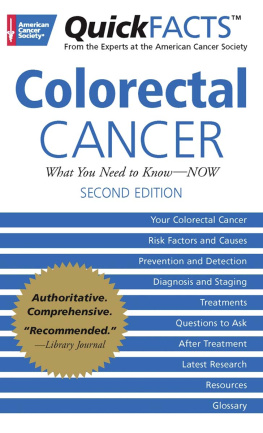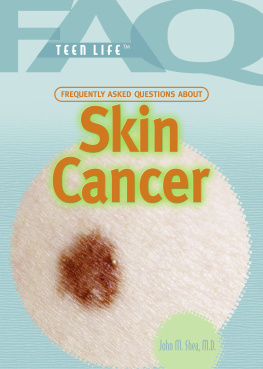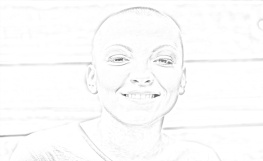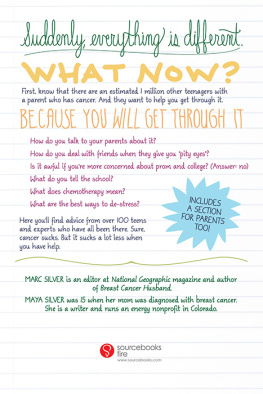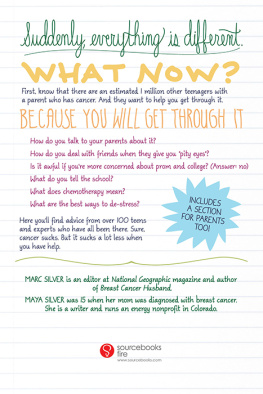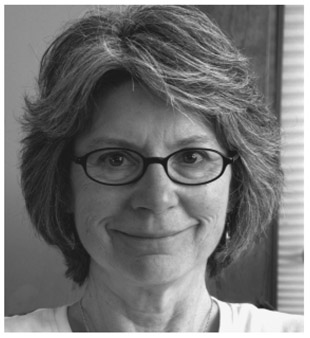About the Author
Denise Thornton is a seasoned newspaper journalist and environmental blogger who holds a masters degree from the University of WisconsinMadison School of Journalism and Mass Communication with an emphasis in science writing. She focuses on translating technical topics for general audiences, especially young readers. Denise was a bone marrow donor to her brother, who died of leukemia as a young man, and is personally familiar with the ways cancer can wound teens and their families and how to cope with its challenges.
Acknowledgments
This book is built upon the generous contributions of many cancer treatment professionals and young cancer survivors who have generously shared their experience with me to make this book possible.
I am forever indebted to the young adults who revisited some of their darkest moments in order to light the path for other teens who must follow their footsteps. Their courage and insights have fueled this project, especially Kenzie Derr, Libby Falck, Jon Michael Gabrielson, Addie Greenwood, Peter Greenwood, Brittany Hill, Amber Luchterhand, Megan Luchterhand, Amanda Nicholls, Prisca Patrick, Seth Paulson, Chase Prochnow, Chelsea Prochnow, Justin Thomas, and Juliette Walker.
Thank you also to Toni Morrissey, senior media specialist of UW Hospital and Clinics, who facilitated my meetings with Sandra Bakk, parent/family advocate; Joyce Kilgore-Carlin, pediatric oncology social worker; Peggy Possin, coordinator of the Long-Term Survival Clinic; Andrea Urban, pediatric oncology social worker; Dr. Carol Diamond, Dr. Diane Puccetti, and Dr. Joel Wish, all associate professors in the University of WisconsinMadison School of Medicine and Public Health; and Dr. Paul Sondel, professor in the University of WisconsinMadison School of Medicine and Public Health.
I also want to thank my husband, Doug Hansmann, and my daughters, Della and K.J., who are all skilled writers in their own fields, for their emotional and technical support. Thanks ultimately to my wonderful editor, Arlene Hirschfelder, for unfailing guidance and assistance.
You Have Cancer
No one ever forgets hearing the words You have cancer.
I remember walking in the door. My mom had gotten the call while I was gone. I saw her face, and I knew that second. I went and lay down and thought, What is my life like now?
Peter Greenwood
All the teens in this book have heard those words. Finding out that the upset stomach, fever, or mystery pain is not something with a quick fix but cancer is probably the scariest moment of anyones life. The important thing is, you are not alone, and there are plenty of places to get help for what is ahead.
This chapter focuses on what it means to learn that you or someone you love has cancer, how doctors can tell you have cancer, and how it feels to deal with what can seem like the worst moment of your life.
Doctors often start trying to figure out what is going on in your body by asking about your personal and family medical history. They will probably need to do a physical exam and take blood samples for testing.
If they see something that looks like a tumor, they may do a biopsy. That means that if they dont like the looks of a certain area, they remove some tissue so that it can be examined.
Your doctor may take tissue for a biopsy in one of three ways:
- A fine-needle aspiration is what most people have. Your doctor removes a sample of tissue with a thin needle. An ultrasound device can help your doctor see where to place the needle.
- The doctor may use a thin, lighted tube (an endoscope) to look at areas inside your body. The doctor can also remove cells or tissue through that tube.
- A surgical biopsy may be needed if a larger sample is required. The doctor may remove the entire tumor or just a part of it.
WHAT IS CANCER?
Cancer occurs when cells start growing out of control and do not die when they should.
Cancer is not just one disease. The name covers more than one hundred types of cancer. Cancers are usually named for the organ or type of cell in which they start. For example, liver cancer starts in the liver. Carcinoma is cancer that begins in the skin or in tissues that line or cover internal organs. Leukemia is cancer that starts in the blood-forming tissue such as the bone marrow and causes large numbers of abnormal blood cells to be made and enter the blood. Lymphoma and myeloma are cancers that begin in the cells of the immune system.
Cancers begin in cells. Your body is made of many types of cells. They grow and divide exactly how and when you need them. When cells get old or damaged, they die, and new ones grow to replace them. Cancer is the name for what happens when the normal process goes haywire. The genetic material of a cell may be damaged or changed and start producing mutations that throw normal cell growth off kilter. Suddenly, cells are not dying when they should, and new cells that are not needed are being produced. There may be so many extra cells that they form a mass of tissue called a tumor.
Not all tumors are cancerous.
Benign tumors usually do not come back when they are removed. They dont spread to other parts of the body. Benign tumors dont usually threaten your life.
Malignant tumors are cancer. The cells in these tumors are dividing like crazy, and they can invade and destroy the tissue around them. Cancer cells can also break away from a malignant tumor, travel through your body in your bloodstream or lymphatic system, and attack other parts of your body.
After tissue is removed, a pathologist (a pathologist is a doctor who identifies diseases by studying cells and tissues under a microscope) will examine it to see if there are any abnormal cells.
People whose cancers are found early and treated quickly are more likely to survive their cancers than people whose cancers are not found until symptoms appear. That makes it tough for kids and teens because people rarely suspect cancer when a student cramming for a test gets a headache, or a hard-charging young athlete suddenly has extra-sore muscles.
YOU ARE AN AYA. WHATS THAT?
Cancer has a special relationship with an adolescent or young adult, also known as an AYA, which is the term medical people use when they are talking about you.
An AYA has been defined by the Report of the Adolescent and Young Adult Oncology Progress Review Group, who are your best friends. They understand your needs. Because they are also scientists, however, they had to define who you are. They have determined that AYAs are people aged fifteen through thirty-nine at the time cancer is diagnosed. Since the types of tumors that AYAs get overlaps with the cancers that affect younger children and older adults, there is really more than just a number involved in who is an AYA. Here are some of the things that make you an AYA.


